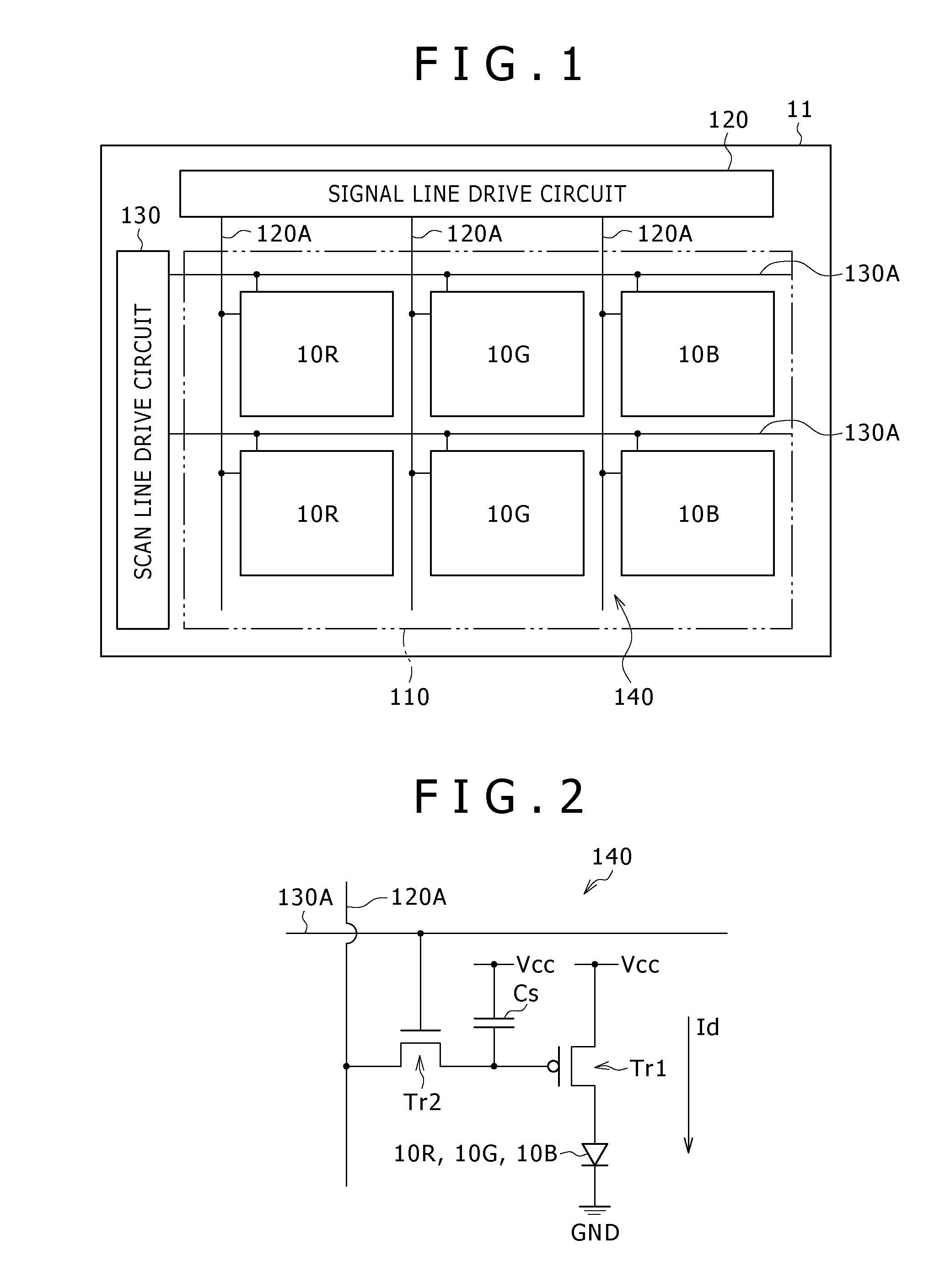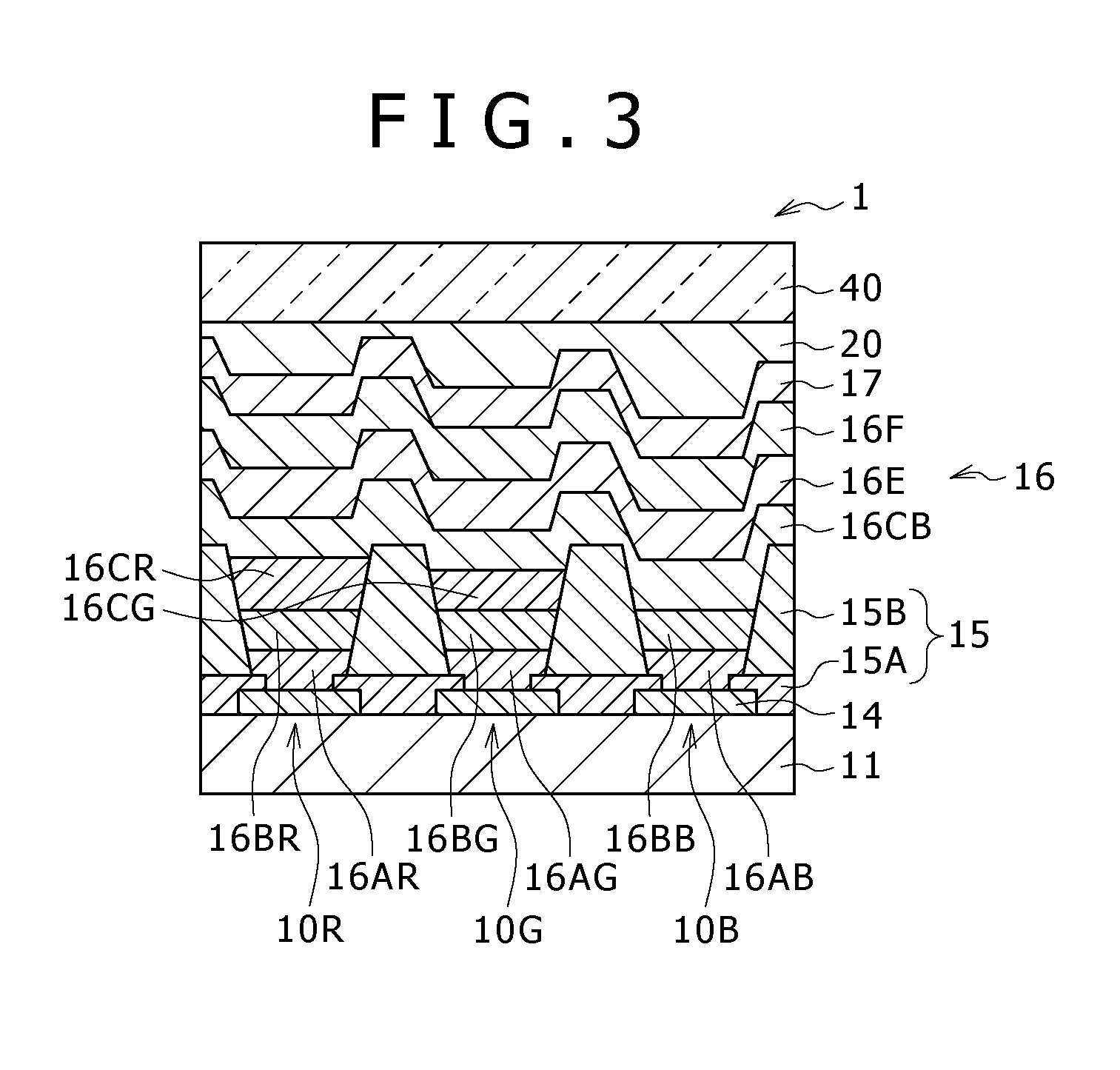Organic EL display device and manufacturing method of the same
a technology of organic el and display device, which is applied in the direction of static indicating device, discharge tube luminescnet screen, instruments, etc., can solve the problems of thick regions adjacent to blue pixels, non-uniform or asymmetrical thickness, etc., and achieve uniformity or symmetry improvement, reduce imbalance in thickness of organic layer, and suppress non-uniform drying speed of applied solution
- Summary
- Abstract
- Description
- Claims
- Application Information
AI Technical Summary
Benefits of technology
Problems solved by technology
Method used
Image
Examples
fifth embodiments
Second to Fifth Embodiments
[0137]A description will be given below of second to fifth embodiments. Each of these embodiments relates to an element structure that particularly enhances the advantageous effect of the pixel arrangement described in the first embodiment with reference to FIGS. 4 to 9. On the other hand, the same components as those in the first embodiment are denoted by the same reference numerals, and the description thereof is omitted.
second embodiment
[0138]The second embodiment is identical in configuration to the first embodiment except that a low molecular weight material is included in the hole transport layer 16BB of the blue organic EL element 10B to provide improved blue light emission efficiency and longer life. Here, the term “low molecular weight material” means a substance other than those made of molecules of a high molecular weight polymer or condensate generated as a result of the repetition of the same or similar reactions of a low molecular weight compound in a chain-like manner, and refers to a compound practically having a single molecular weight. Further, heating does not practically generate any new chemical bond between molecules. Therefore, a low molecular weight material exists in the form of a single molecule.
[0139]Among specific materials that can be used as the hole transport layer 16BB are benzine, styrylamine, triphenylamine, porphyrin, triphenylene, azatriphenylene, tetracyanoquinodimethane, triazole,...
third embodiment
[0165]The third embodiment is identical in configuration to the second embodiment except that a low molecular weight material is included in the red and green light-emitting layers 16CR and 16CG.
[0166]The red and green light-emitting layers 16CR and 16CG are made of a mixture of two materials, a high molecular weight (light-emitting) material and a low molecular weight material added thereto. As a result, the present embodiment provides improved hole and electron injection efficiencies from the blue light-emitting layer 16CB serving as a common layer to the red or green light-emitting layer 16CR or 16CG. Here, the term “low molecular weight material” refers to a monomer or oligomer obtained by bonding two to 10 of this monomer together. A low molecular weight material having a weight-average molecular weight of 50000 or less is preferred. It should be noted that low molecular weight materials having a weight-average molecular weight beyond the above level are not necessarily exclude...
PUM
 Login to View More
Login to View More Abstract
Description
Claims
Application Information
 Login to View More
Login to View More - R&D
- Intellectual Property
- Life Sciences
- Materials
- Tech Scout
- Unparalleled Data Quality
- Higher Quality Content
- 60% Fewer Hallucinations
Browse by: Latest US Patents, China's latest patents, Technical Efficacy Thesaurus, Application Domain, Technology Topic, Popular Technical Reports.
© 2025 PatSnap. All rights reserved.Legal|Privacy policy|Modern Slavery Act Transparency Statement|Sitemap|About US| Contact US: help@patsnap.com



